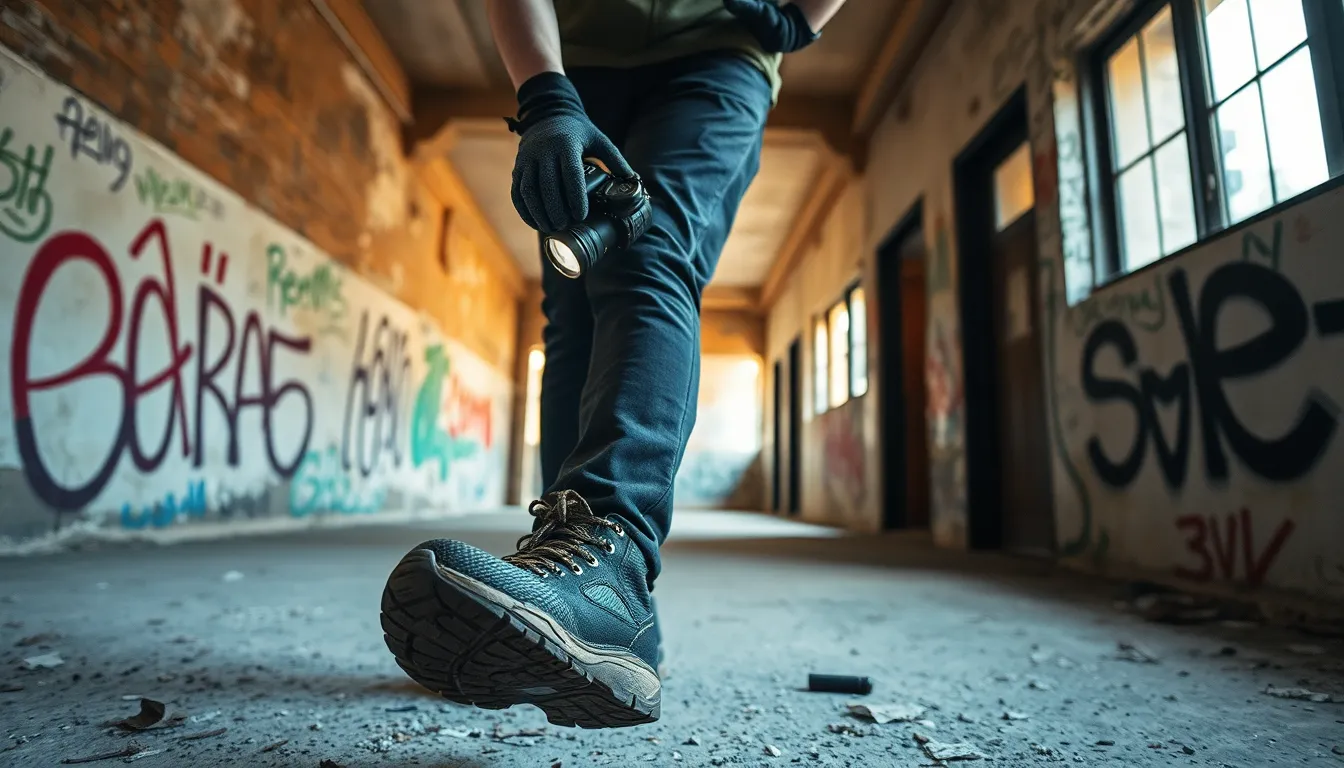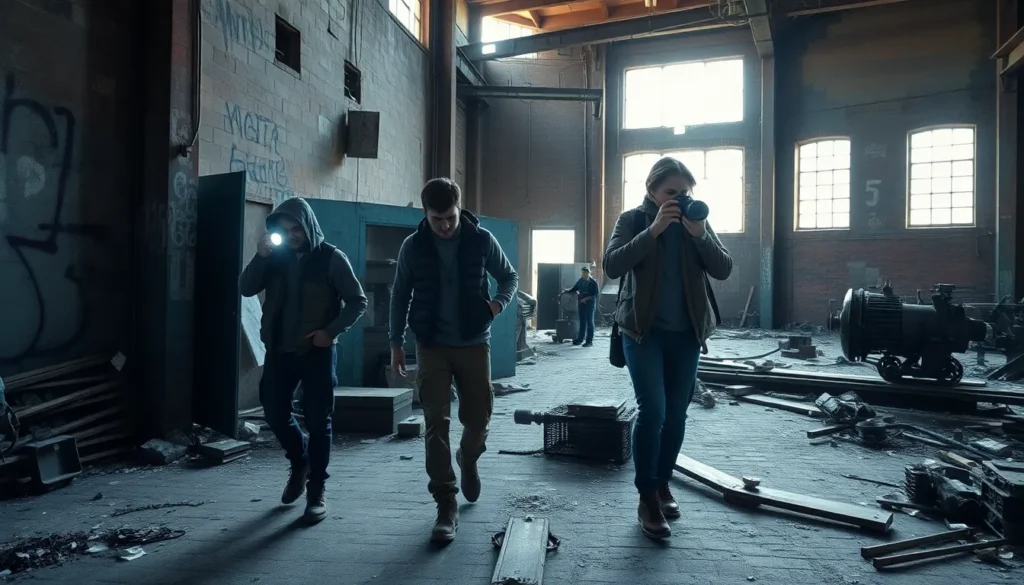Urban exploration opens up a world of hidden gems and forgotten spaces, inviting adventurers to uncover the stories that lie within abandoned buildings and derelict sites. This thrilling hobby not only fuels curiosity but also offers a unique perspective on the urban landscape. Whether it’s an old factory or a crumbling theater, each location has its own narrative waiting to be discovered.
However, diving into the realm of urban exploration requires more than just a sense of adventure. It demands preparation, respect for the environment, and an understanding of safety protocols. With the right tips, explorers can navigate these intriguing spaces while minimizing risks and maximizing enjoyment. Embracing the thrill of the unknown is just the beginning; knowing how to explore responsibly makes the experience even more rewarding.
Table of Contents
ToggleWhat Is Urban Exploration?
Urban exploration, often referred to as “urbex,” involves exploring abandoned or off-limits urban structures. These locations can include old factories, deserted schools, and forgotten tunnels. Enthusiasts seek to document their findings through photographs and narratives, capturing the essence of each unique site.
Each exploration offers a glimpse into history. These locations showcase architectural styles and social narratives, inviting explorers to ponder the past lives of the buildings. This hobby attracts individuals interested in photography, history, architecture, and adventure.
Although urban exploration can be thrilling, it carries inherent risks. Navigating deteriorating buildings and unknown environments requires caution and respect for the sites visited. Engaging in urban exploration emphasizes the importance of adhering to local laws and respecting property rights. Explorers should prioritize their safety and that of their companions during every outing.
Essential Gear for Urban Exploration

Choosing the right gear significantly enhances the urban exploration experience while ensuring safety. Essential equipment includes safety gear and photography tools tailored for the environment.
Safety Equipment
Urban explorers must prioritize safety equipment to navigate through potentially hazardous sites.
- Flashlight: A bright, durable flashlight aids visibility in dimly lit areas.
- First Aid Kit: Carry a compact first aid kit for managing minor injuries.
- Dust Mask: A dust mask protects against airborne particles in abandoned buildings.
- Gloves: Sturdy gloves afford hand protection when handling sharp or dirty materials.
- Sturdy Footwear: Strong, supportive shoes minimize the risk of injuries while traversing uneven terrain.
- Safety Vest: A reflective safety vest increases visibility, especially in low-light conditions.
Photography Gear
Capturing incredible imagery enhances the exploration experience.
- DSLR or Mirrorless Camera: A quality camera captures high-resolution images of unique sites.
- Wide-Angle Lens: A wide-angle lens allows for capturing expansive interiors and exteriors.
- Tripod: A sturdy tripod stabilizes shots in low light, ensuring clarity in photographs.
- Extra Batteries and Memory Cards: Additional batteries and memory cards prevent missed opportunities during lengthy explorations.
- Lightweight Backpack: A practical, lightweight backpack stores gear securely while allowing easy transport.
Equipping carefully allows for safe exploration and supports the documentation of thrilling discoveries.
Planning Your Urban Exploration
Planning an urban exploration outing requires careful consideration of locations and adherence to local regulations. Successful exploration hinges on thorough preparation and awareness of environmental factors.
Researching Locations
Researching locations involves identifying potential sites that offer unique visual and atmospheric qualities. Seek out abandoned buildings, industrial sites, and historical landmarks. Utilize online resources like urban exploration forums, photography websites, and social media groups for insights. Collect data on accessibility, historical significance, and any potential hazards. Map out multiple site options, as unforeseen circumstances may necessitate changes in exploration plans. Engage with local explorers to gain first-hand knowledge of preferred sites, conditions, and hidden gems.
Understanding Local Laws
Understanding local laws is crucial for legal and safe urban exploration. Each area can have different regulations regarding trespassing, property rights, and safety codes. Familiarize yourself with local ordinances to avoid legal penalties. Contact local authorities for any permits, if required, and ensure compliance with guidelines that govern exploration activities. Respect private property rights by seeking permission when needed. Remaining informed about legal boundaries enhances the overall experience and promotes responsible urban exploration.
Techniques for Successful Exploration
Successful urban exploration requires essential techniques that enhance safety and experience. Understanding the environment and anticipating challenges fosters a productive adventure.
Navigating Urban Environments
Navigating urban environments demands careful observation and strategic planning. Explorers should:
- Assess surroundings: Evaluate the area before entering an abandoned structure. Look for potential hazards like unstable floors or debris.
- Utilize maps: Use online maps and app tools to identify entry points and the layout of the site. GPS can aid in backtracking if needed.
- Stay alert: Maintain awareness of noises, light changes, and movements. These factors indicate nearby people or wildlife that may pose risks.
- Follow paths: Stick to established paths or areas previously accessed by others. This minimizes disturbance to the site and ensures safety by avoiding unseen hazards.
- Communicate clearly: Ensure companions understand plans and routes. Use walkie-talkies or phones for effective communication in larger or more complex sites.
Overcoming Obstacles
Overcoming obstacles is integral to successful exploration. Common challenges include environmental hazards and physical barriers. Explorers should:
- Adapt quickly: Adjust plans when encountering unexpected barriers, such as locked gates or unanticipated safety risks.
- Utilize tools: Carry basic tools like crowbars or screwdrivers for opening access points. Use them sparingly and ethically to avoid damage.
- Work as a team: Collaborate with companions for help in navigating difficult areas, lifting heavy objects, or safely exploring complex sites.
- Practice patience: Approach challenges calmly. Rushing increases the risk of injury or mistakes. Taking time leads to better decision-making.
- Embrace creativity: Find alternative routes or methods to explore. Using available objects for climbing or balancing can aid in overcoming obstacles.
By implementing these techniques, urban explorers enhance their experiences while prioritizing safety and responsibility.
Urban Exploration Etiquette
Urban exploration requires a strong sense of etiquette to ensure safety, respect, and enjoyment during adventures. Explorers should adhere to the following guidelines:
- Respect Property Rights
Respect private property by staying off restricted areas. Seek permission wherever necessary. Ignoring boundaries can lead to legal consequences and damage the reputations of fellow explorers.
- Leave No Trace
Maintain a clean environment by taking all trash and belongings. Leaving no trace includes not vandalizing structures or removing artifacts. Preservation of sites enhances future explorations for others.
- Be Mindful of Noise
Limit noise levels to avoid drawing attention. Loud sounds can disturb wildlife and alert property owners or authorities. Quiet exploration creates a more immersive experience and reduces risks.
- Avoid Drawing Attention
Stay inconspicuous when entering and exiting sites. Use discreet clothing and equipment to blend into the surroundings. Attention can jeopardize safety and spoil the exploration for others.
- Inform Someone
Share exploration plans with a friend or family member. Provide details about intended locations and expected return times. This precaution increases safety in case of emergencies or unexpected situations.
- Work as a Team
Stay close and communicate effectively with companions. Teamwork fosters safety by ensuring everyone feels supported. Explorers can rely on one another in challenging circumstances.
- Follow Local Laws
Stay informed about laws and regulations specific to the exploration area. Awareness of ordinances regarding trespassing can prevent conflicts with law enforcement. Legal explorations contribute to responsible urban exploration.
- Be Prepared for Emergencies
Prepare for potential emergencies by packing a first aid kit and maintaining a charged phone. Understand basic first aid and keep contact information readily accessible. Being prepared ensures a quick response during unforeseen incidents.
By following these etiquette guidelines, urban explorers contribute to a community that values safety, respect for locations, and responsible exploration practices.
Conclusion
Urban exploration offers a unique way to connect with history and discover hidden treasures in urban landscapes. By prioritizing safety and respecting local regulations explorers can enjoy thrilling adventures while minimizing risks. Proper planning and the right gear are essential for a successful outing.
Adhering to etiquette not only enhances personal experiences but also fosters a community that values responsible exploration. As adventurers embark on their journeys into forgotten spaces they’ll find that each exploration can reveal stories waiting to be told. Embracing the spirit of urbex with respect and caution ensures that these hidden gems remain accessible for future explorers.





